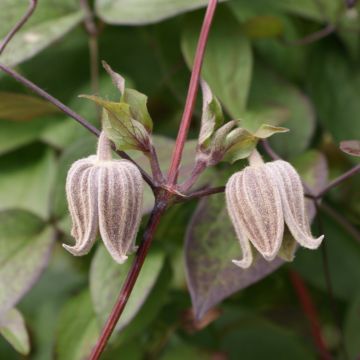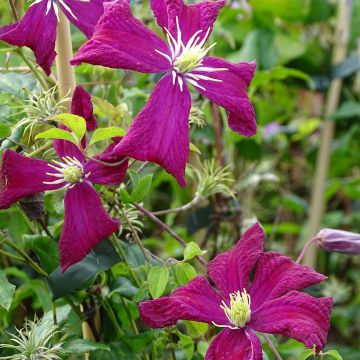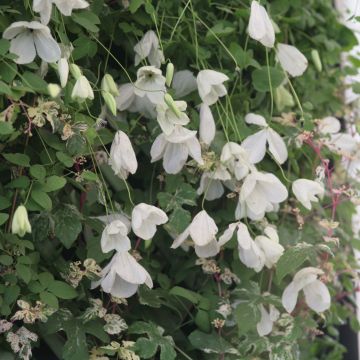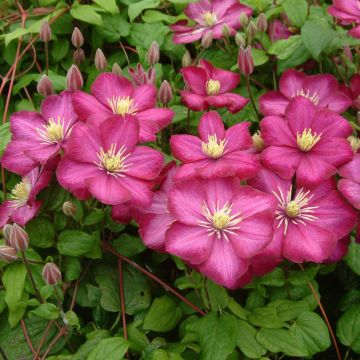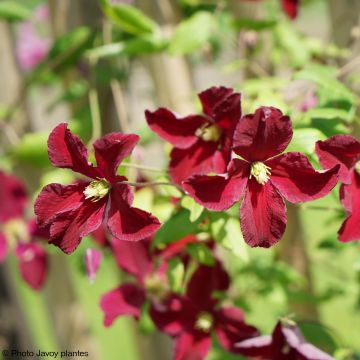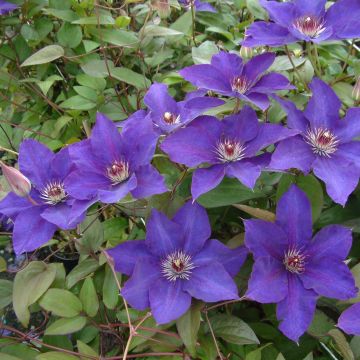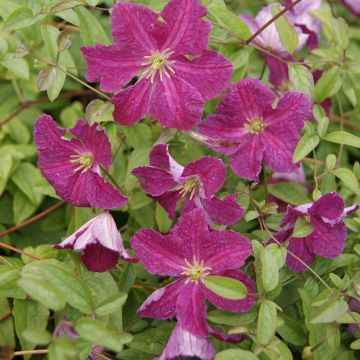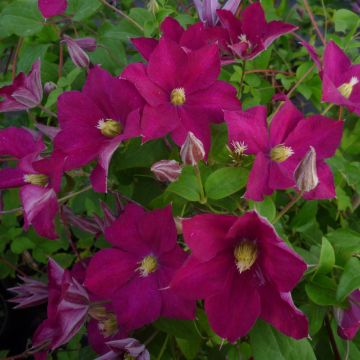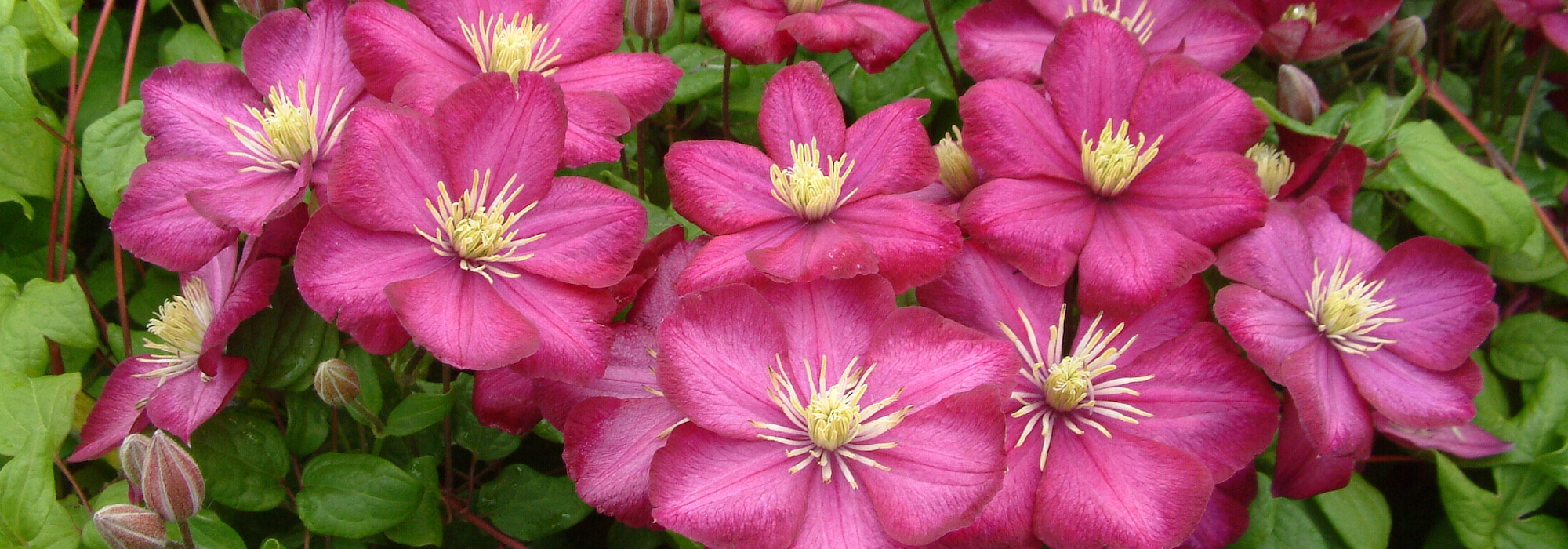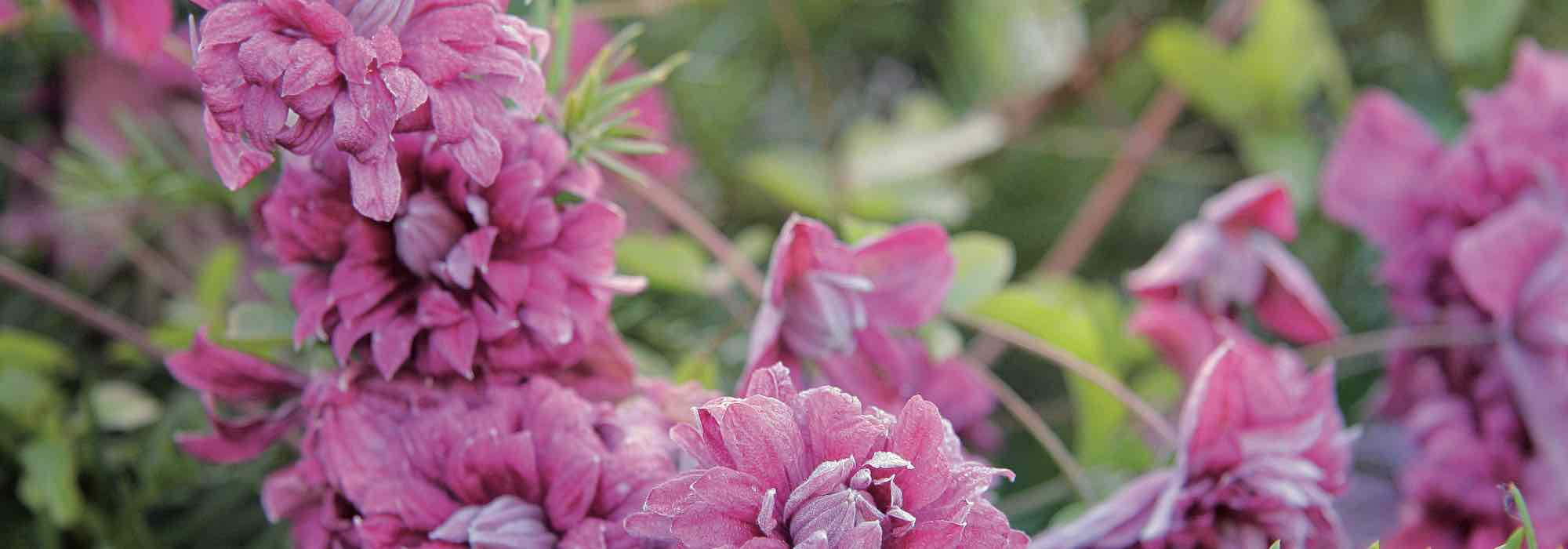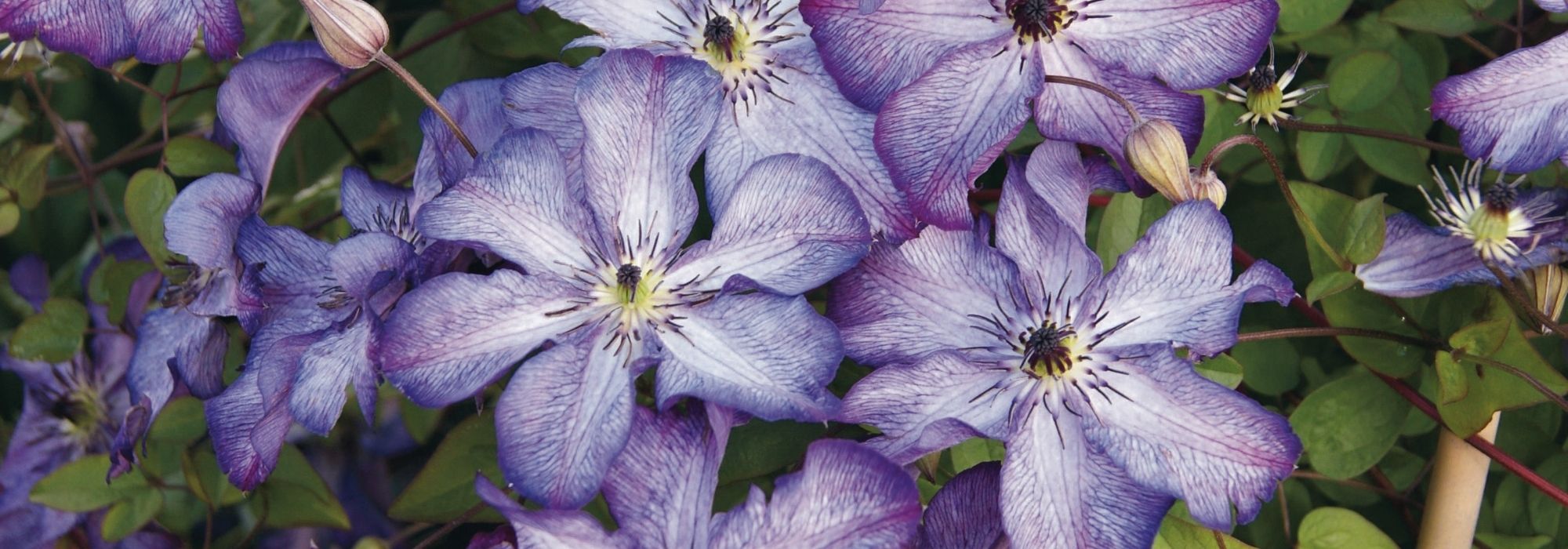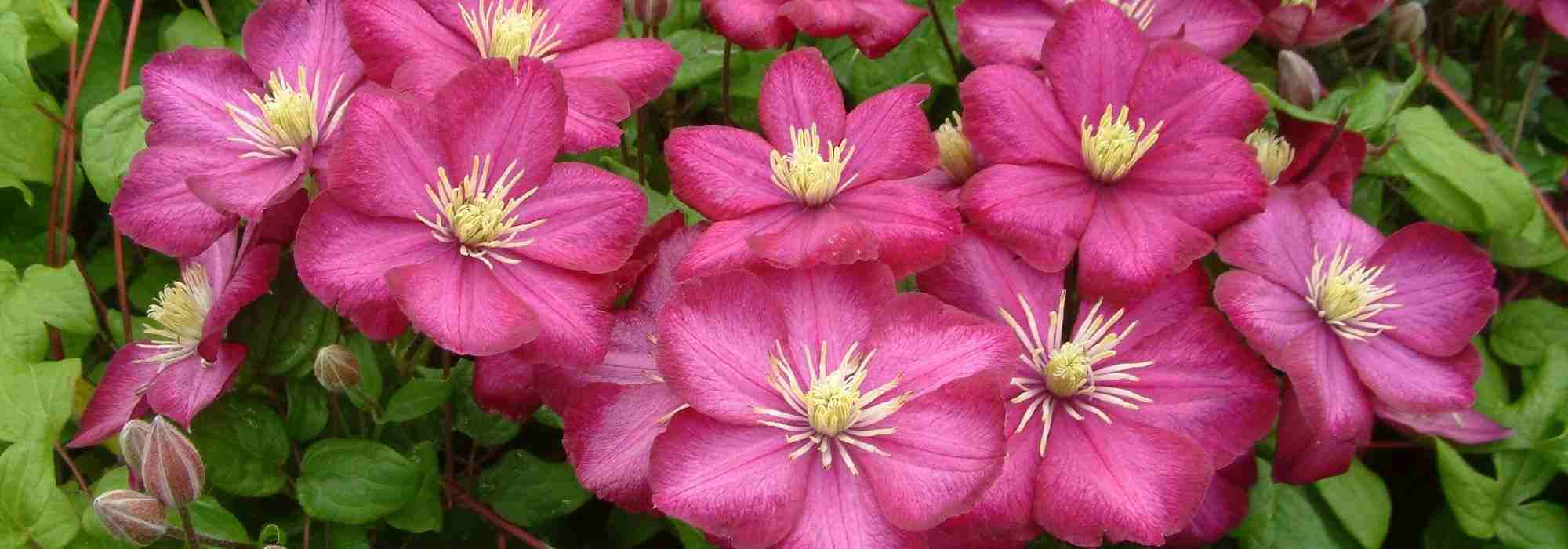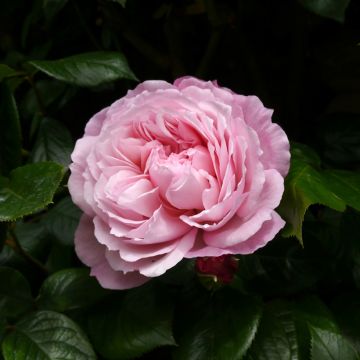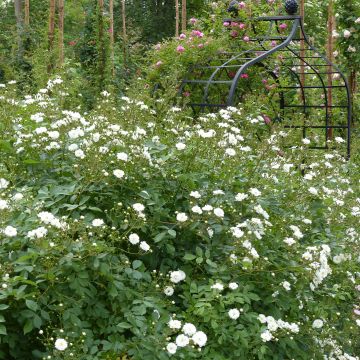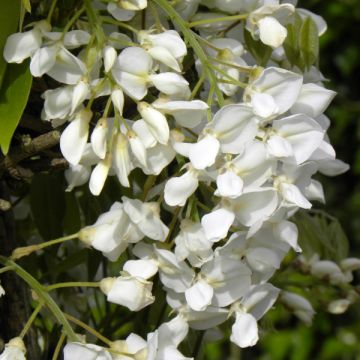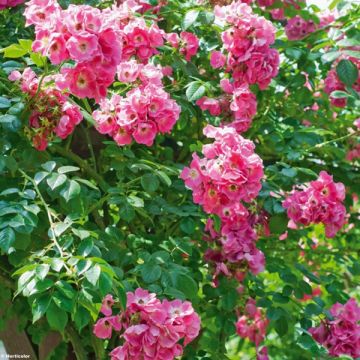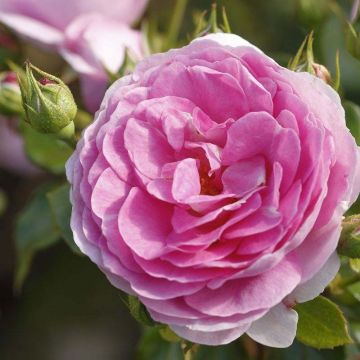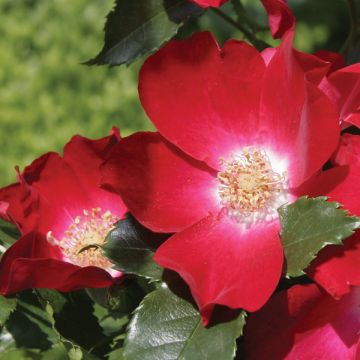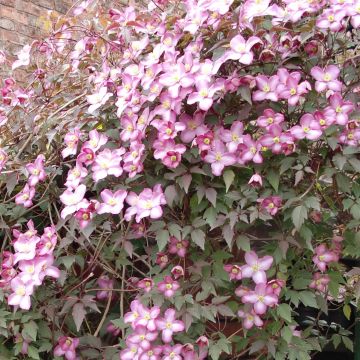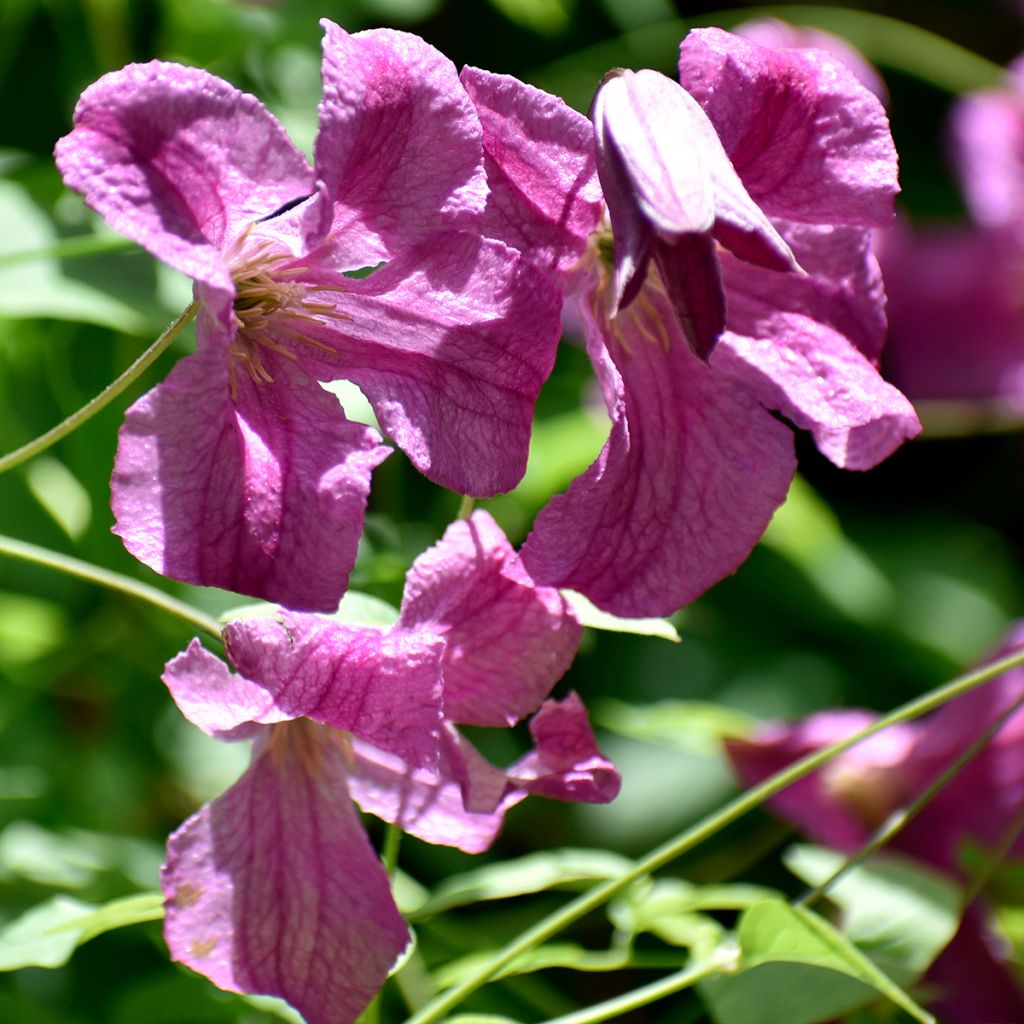

Clematis Krakowiak
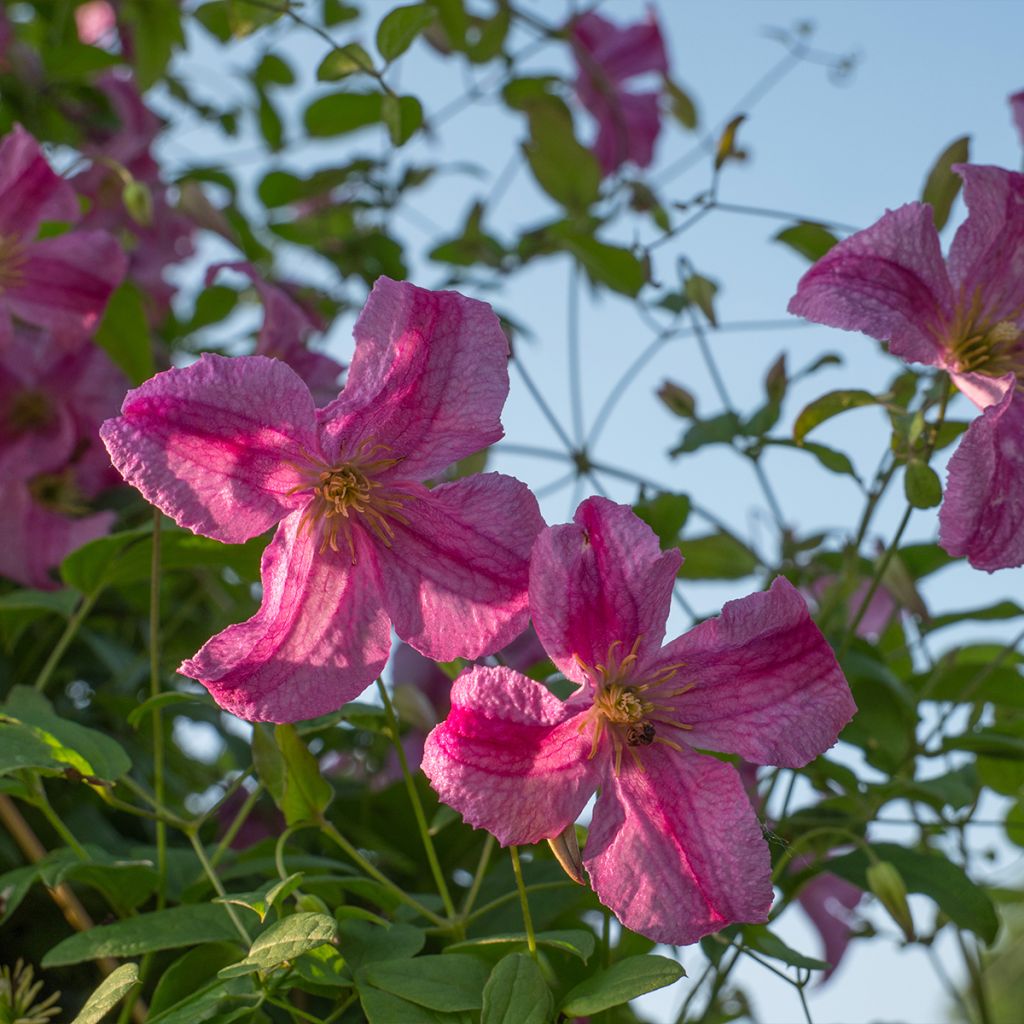

Clematis Krakowiak
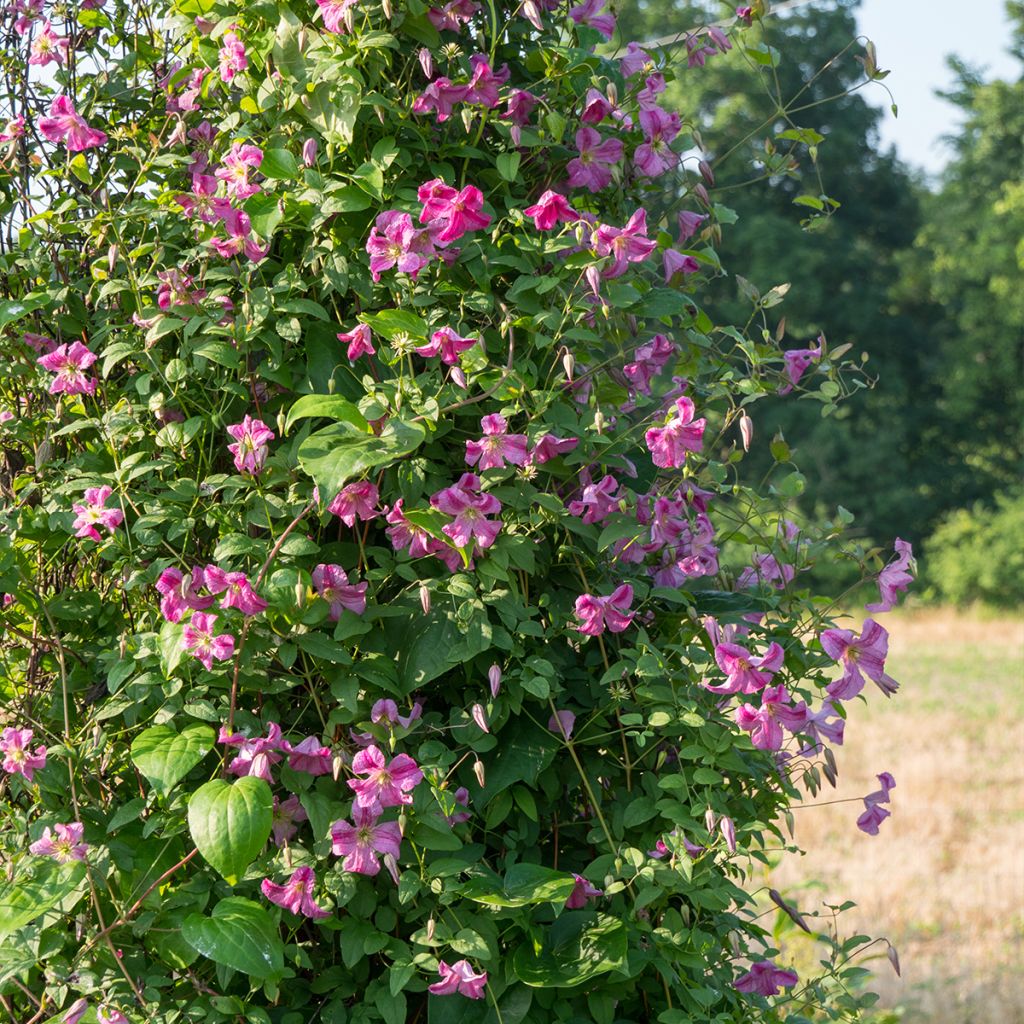

Clematis Krakowiak
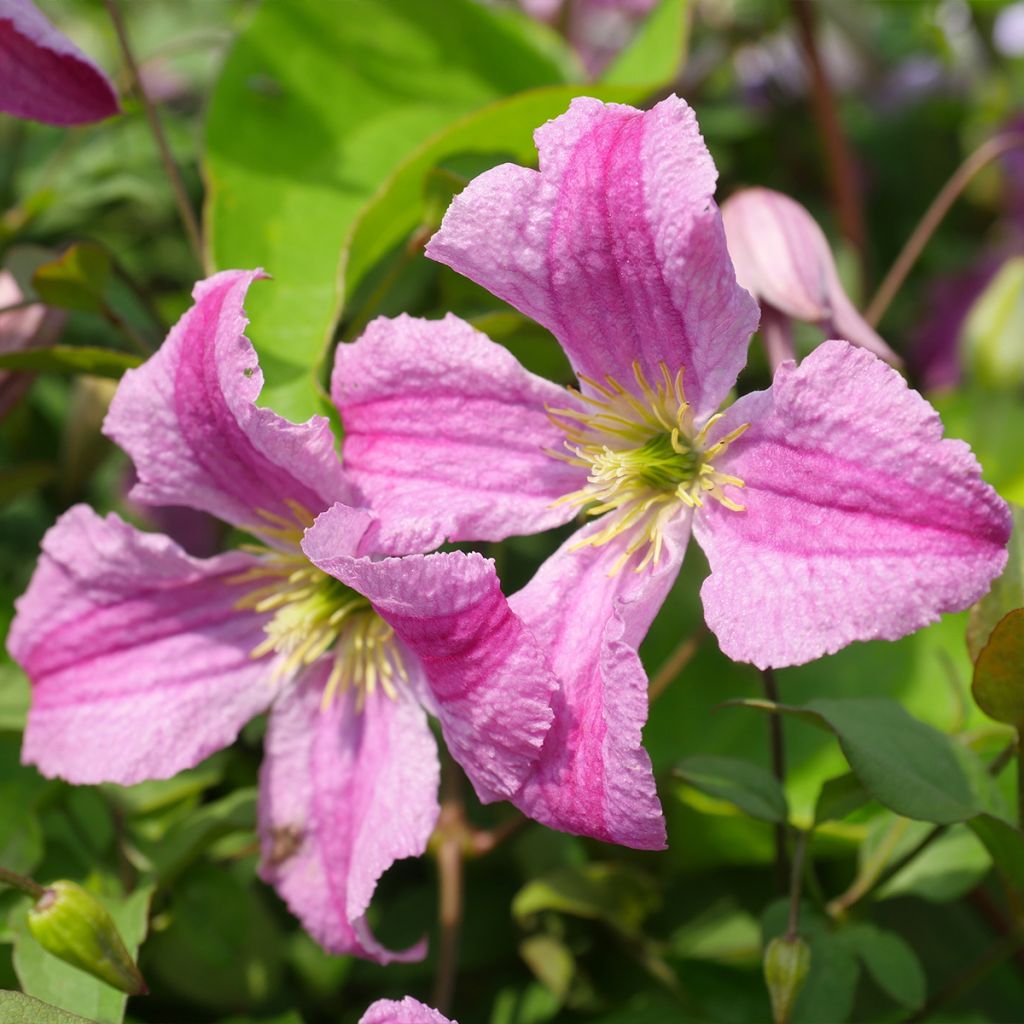

Clematis Krakowiak
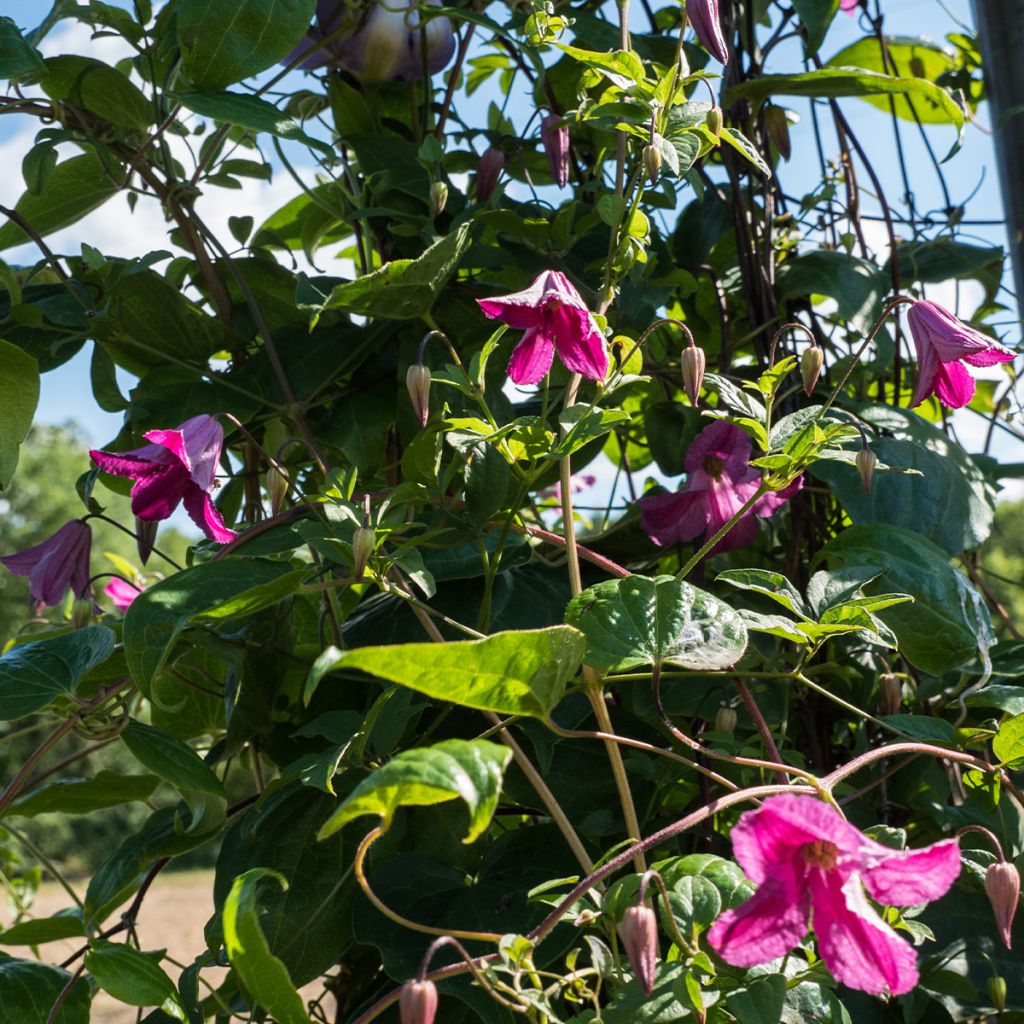

Clematis Krakowiak
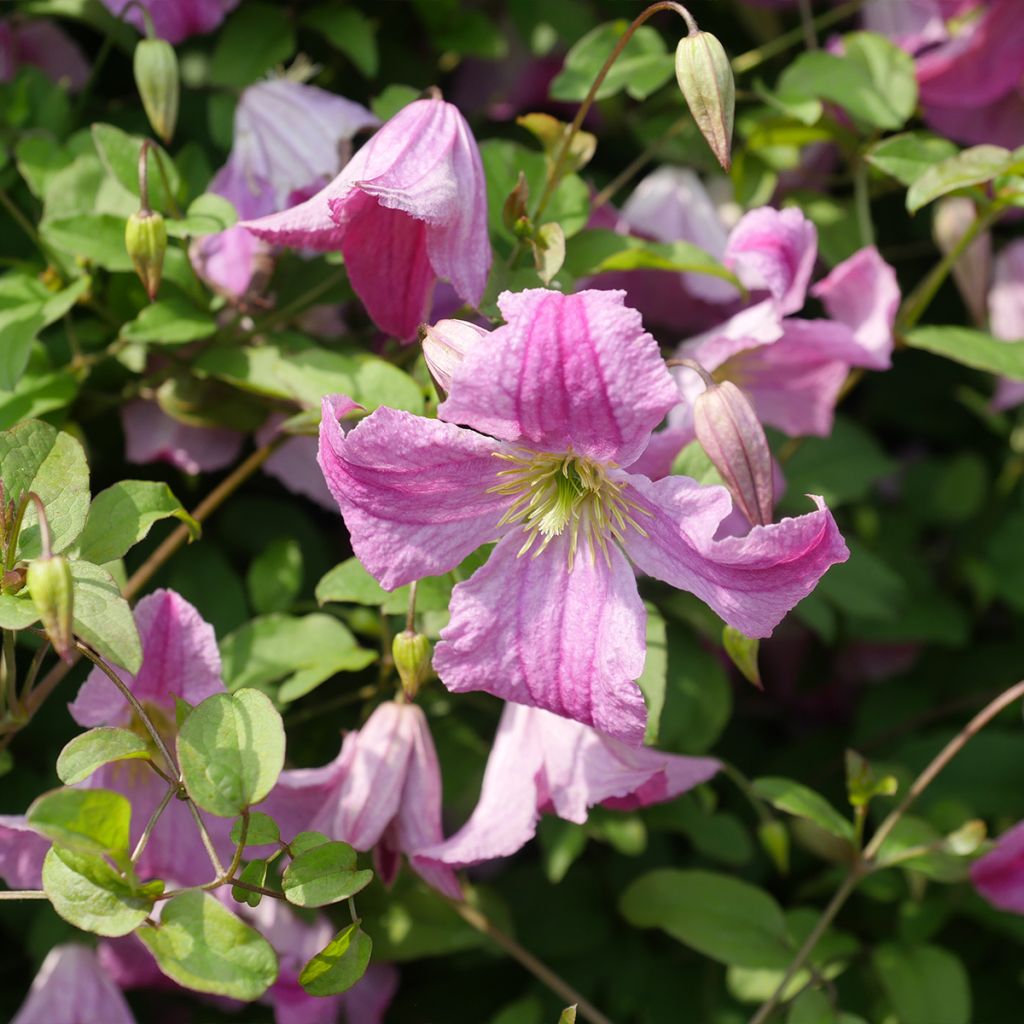

Clematis Krakowiak
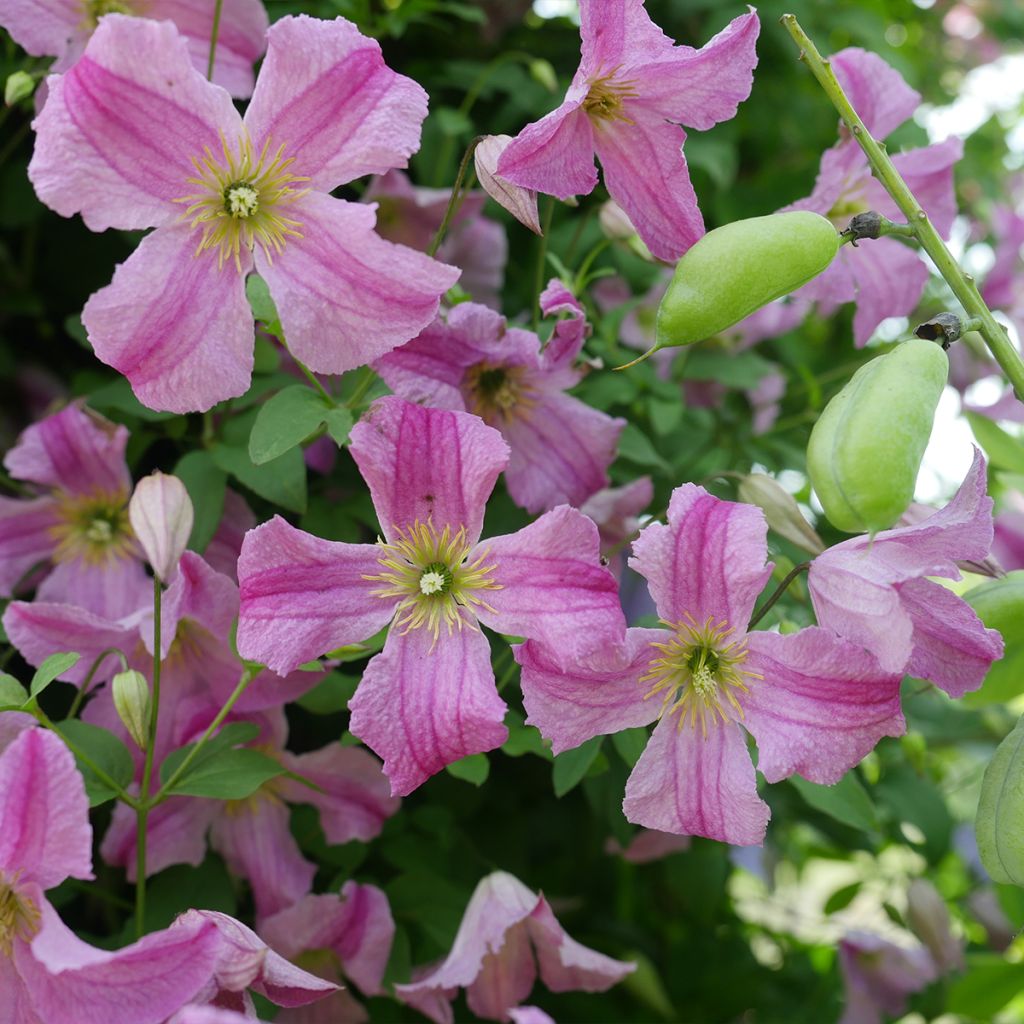

Clematis Krakowiak
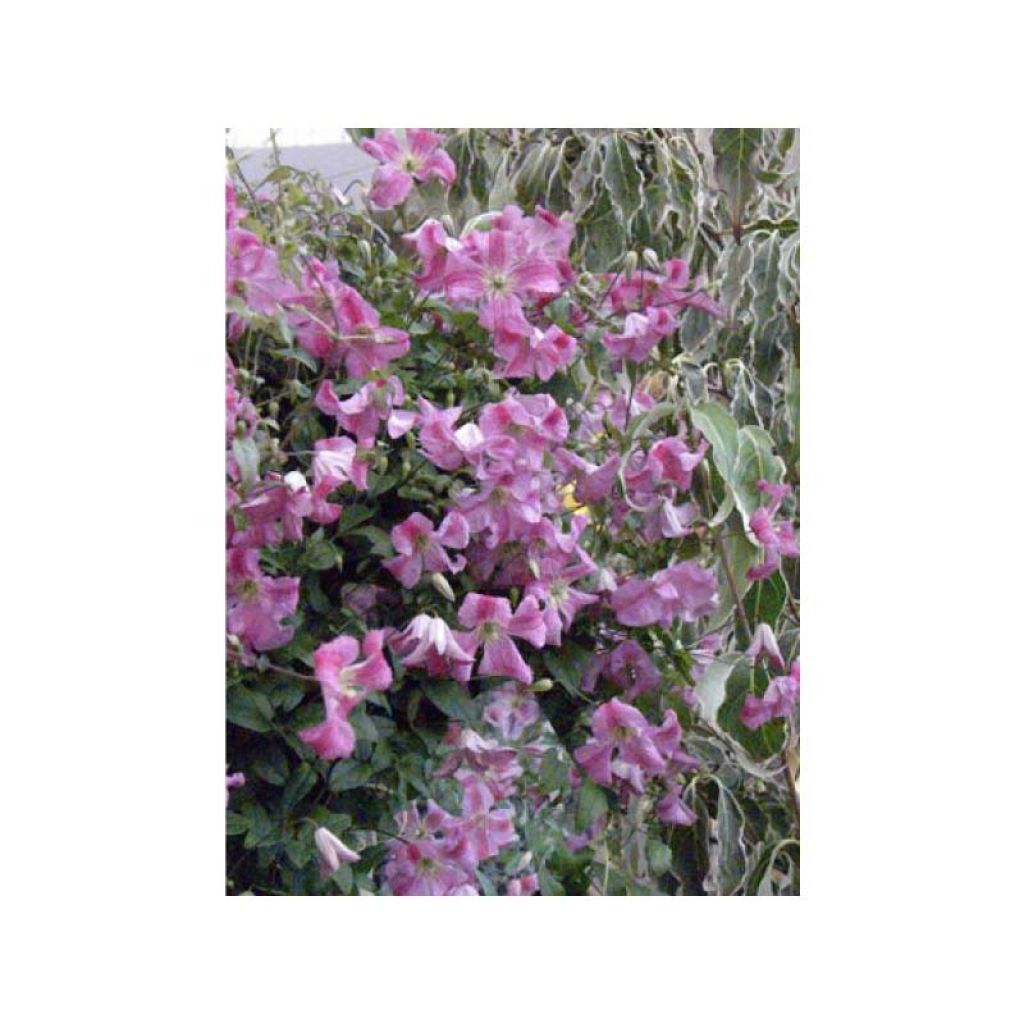

Clematis Krakowiak
Clematis Krakowiak
Clematis x viticella Krakowiak®
Italian Leather Flower, Purple Clematis, Virgin's Bower
Special offer!
Receive a €20 voucher for any order over €90 (excluding delivery costs, credit notes, and plastic-free options)!
1- Add your favorite plants to your cart.
2- Once you have reached €90, confirm your order (you can even choose the delivery date!).
3- As soon as your order is shipped, you will receive an email containing your voucher code, valid for 3 months (90 days).
Your voucher is unique and can only be used once, for any order with a minimum value of €20, excluding delivery costs.
Can be combined with other current offers, non-divisible and non-refundable.
Home or relay delivery (depending on size and destination)
Schedule delivery date,
and select date in basket
This plant carries a 6 months recovery warranty
More information
We guarantee the quality of our plants for a full growing cycle, and will replace at our expense any plant that fails to recover under normal climatic and planting conditions.
Would this plant suit my garden?
Set up your Plantfit profile →
Description
Clematis 'Krakowiak', is a hybrid of Clematis viticella, from which it inherited its robustness and long summer flowering. Its delicate-looking flowers appear from June in small open bells of deep pink with crumpled petals and darker pink centres. The petals are beautifully curved backwards to reveal a bright green-white centre that catches the light. Its numerous flowers and compound foliage develop quickly into a generous, delicate, light and vibrant-coloured mass. This climbing perennial is very robust and easy to grow, requiring well-drained, moist and rich soil with its head in the sun and severe pruning before its spring regrowth. Its compact size and fast-growing tendrils make it ideal for covering an unsightly fence, a plain shrub, or even a balcony railing in a pot.
Clematis belong to the Ranunculaceae family. They can be found in Europe, the Himalayas, China, Australia, and North and Central America. 'Krakowiak' is a Polish variety selected by Szczepan Marczynski and marketed since 2011. It has received several awards and stands out from other cultivars with its pink flowers. It descends from Clematis viticella, native to southern Europe, known for its natural resistance to clematis wilt. This herbaceous plant is a perennial, semi-woody climber, reaching an average height of 3m (10ft), with a spread of 1m (3ft). This clematis bears well-opened flowers up to 5 to 8cm (2 to 3in) in diameter, which appear on the current year's shoots in successive waves from June to the end of summer. The flowers are solitary or grouped in small clusters and they open into stars, revealing 4 delicately fringed, deep pink petals with reddish-pink middles. It is the light centre of the flower that gives it charm as the long, white-green stamens intensify the contrast between the light pink and dark pink of its petals. The smooth leaves are divided into 3 elliptical to lanceolate, olive green leaflets. The foliage dries up and dies in winter. This clematis clings to its support or host plant through petioles transformed into tendrils.
Plant clematis alongside your climbing roses ('New Dawn', 'Pomponella', 'Bouquet Parfait'), to extend the flowering of your walls and pergolas until the end of summer. This is a diverse genus, with flowers of all colours, shapes and sizes. Take advantage of their easy cultivation to give your garden a romantic and bohemian touch. 'Krakowiak' will pair well with the white flowers with purple-red stamens of 'Miss Bateman', for example, a small climber with a similar stature, to climb a fence or cover a wall exposed to the morning sun.
Tips: Avoid excessive fertiliser applications that stimulate foliage growth at the expense of flowers. Do not mulch, to avoid excessive moisture.
Clematis Krakowiak in pictures
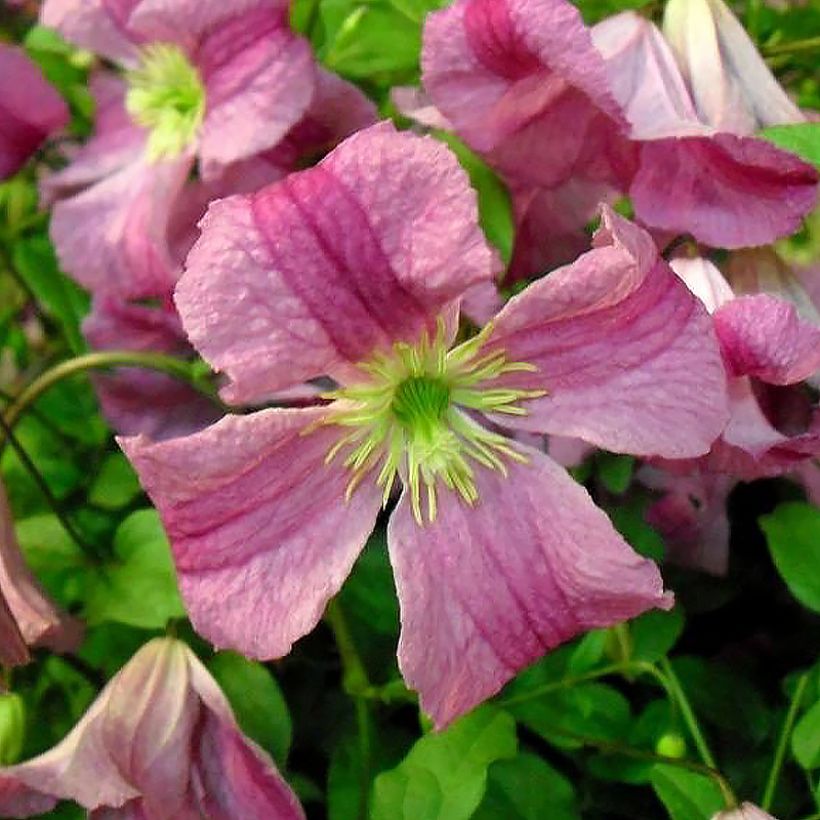

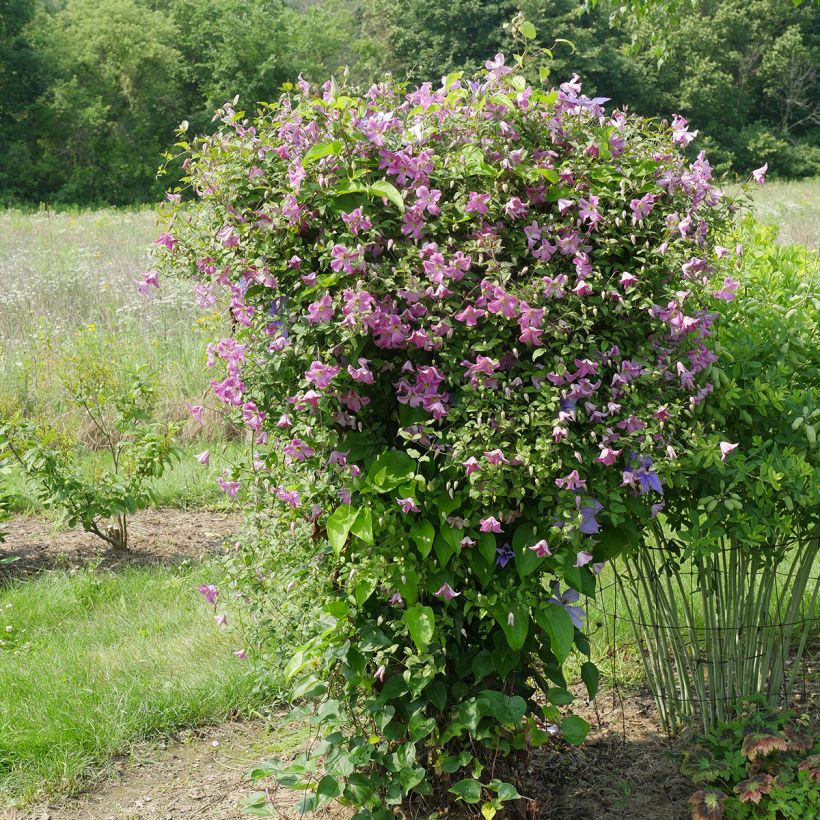

Plant habit
Flowering
Foliage
Botanical data
Clematis
x viticella
Krakowiak®
Ranunculaceae
Italian Leather Flower, Purple Clematis, Virgin's Bower
Cultivar or hybrid
Other Clematis Viticella
View all →Planting and care
clematis 'Krakowiak' prefers non-scorching, but sunny and bright situations. It even flowers in bright shade, especially in very sunny regions. Plant it in fertile, well-drained soil, enriched with compost, shading the roots and the base of the stem (with a flat tile for example). Clematis can be susceptible to wilt in too wet soil, but varieties with the genes of C.viticella seem more resistant to this terrible disease.
They also tolerate heat and relatively dry soils in summer better. Plant it, with the rootball at an angle, covering it with 3 cm (1in) of soil, in well-worked soil, lightened with good compost and coarse sand. After planting, cut back the stems to about 30 cm (12in) from the base above a healthy pair of buds. Water regularly during the first few weeks, but be careful not to let the water stagnate as this can cause fungus to develop at the neck. Mulch all clematis in February with garden compost or well-rotted manure, avoiding direct contact with the stems. Train the stems, without squeezing them, until the plant grips itself.
Clematis also like to grow freely on neighbouring plants. After a few years, cover the base of your climbing clematis with a small mound of soil, this reduces the risk of clematis wilt while promoting the growth of vigorous new shoots from the crown. Voles and caterpillars can attack clematis and devour the stems. Aphids and greenhouse whiteflies are also potential pests.
Planting period
Intended location
Care
Planting & care advice
This item has not been reviewed yet - be the first to leave a review about it.
Similar products
Haven't found what you were looking for?
Hardiness is the lowest winter temperature a plant can endure without suffering serious damage or even dying. However, hardiness is affected by location (a sheltered area, such as a patio), protection (winter cover) and soil type (hardiness is improved by well-drained soil).

Photo Sharing Terms & Conditions
In order to encourage gardeners to interact and share their experiences, Promesse de fleurs offers various media enabling content to be uploaded onto its Site - in particular via the ‘Photo sharing’ module.
The User agrees to refrain from:
- Posting any content that is illegal, prejudicial, insulting, racist, inciteful to hatred, revisionist, contrary to public decency, that infringes on privacy or on the privacy rights of third parties, in particular the publicity rights of persons and goods, intellectual property rights, or the right to privacy.
- Submitting content on behalf of a third party;
- Impersonate the identity of a third party and/or publish any personal information about a third party;
In general, the User undertakes to refrain from any unethical behaviour.
All Content (in particular text, comments, files, images, photos, videos, creative works, etc.), which may be subject to property or intellectual property rights, image or other private rights, shall remain the property of the User, subject to the limited rights granted by the terms of the licence granted by Promesse de fleurs as stated below. Users are at liberty to publish or not to publish such Content on the Site, notably via the ‘Photo Sharing’ facility, and accept that this Content shall be made public and freely accessible, notably on the Internet.
Users further acknowledge, undertake to have ,and guarantee that they hold all necessary rights and permissions to publish such material on the Site, in particular with regard to the legislation in force pertaining to any privacy, property, intellectual property, image, or contractual rights, or rights of any other nature. By publishing such Content on the Site, Users acknowledge accepting full liability as publishers of the Content within the meaning of the law, and grant Promesse de fleurs, free of charge, an inclusive, worldwide licence for the said Content for the entire duration of its publication, including all reproduction, representation, up/downloading, displaying, performing, transmission, and storage rights.
Users also grant permission for their name to be linked to the Content and accept that this link may not always be made available.
By engaging in posting material, Users consent to their Content becoming automatically accessible on the Internet, in particular on other sites and/or blogs and/or web pages of the Promesse de fleurs site, including in particular social pages and the Promesse de fleurs catalogue.
Users may secure the removal of entrusted content free of charge by issuing a simple request via our contact form.
The flowering period indicated on our website applies to countries and regions located in USDA zone 8 (France, the United Kingdom, Ireland, the Netherlands, etc.)
It will vary according to where you live:
- In zones 9 to 10 (Italy, Spain, Greece, etc.), flowering will occur about 2 to 4 weeks earlier.
- In zones 6 to 7 (Germany, Poland, Slovenia, and lower mountainous regions), flowering will be delayed by 2 to 3 weeks.
- In zone 5 (Central Europe, Scandinavia), blooming will be delayed by 3 to 5 weeks.
In temperate climates, pruning of spring-flowering shrubs (forsythia, spireas, etc.) should be done just after flowering.
Pruning of summer-flowering shrubs (Indian Lilac, Perovskia, etc.) can be done in winter or spring.
In cold regions as well as with frost-sensitive plants, avoid pruning too early when severe frosts may still occur.
The planting period indicated on our website applies to countries and regions located in USDA zone 8 (France, United Kingdom, Ireland, Netherlands).
It will vary according to where you live:
- In Mediterranean zones (Marseille, Madrid, Milan, etc.), autumn and winter are the best planting periods.
- In continental zones (Strasbourg, Munich, Vienna, etc.), delay planting by 2 to 3 weeks in spring and bring it forward by 2 to 4 weeks in autumn.
- In mountainous regions (the Alps, Pyrenees, Carpathians, etc.), it is best to plant in late spring (May-June) or late summer (August-September).
The harvesting period indicated on our website applies to countries and regions in USDA zone 8 (France, England, Ireland, the Netherlands).
In colder areas (Scandinavia, Poland, Austria...) fruit and vegetable harvests are likely to be delayed by 3-4 weeks.
In warmer areas (Italy, Spain, Greece, etc.), harvesting will probably take place earlier, depending on weather conditions.
The sowing periods indicated on our website apply to countries and regions within USDA Zone 8 (France, UK, Ireland, Netherlands).
In colder areas (Scandinavia, Poland, Austria...), delay any outdoor sowing by 3-4 weeks, or sow under glass.
In warmer climes (Italy, Spain, Greece, etc.), bring outdoor sowing forward by a few weeks.































